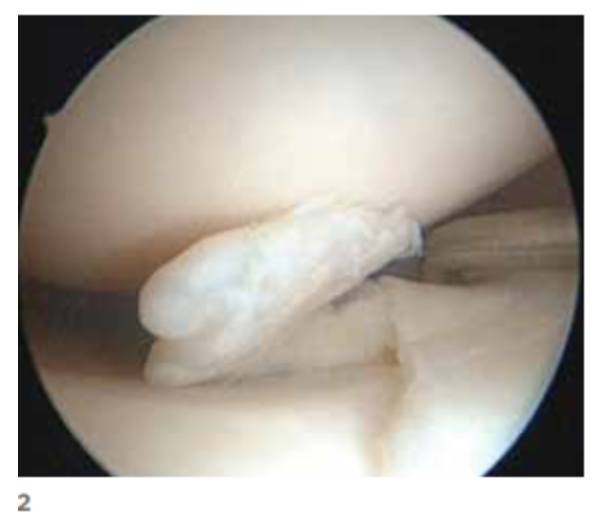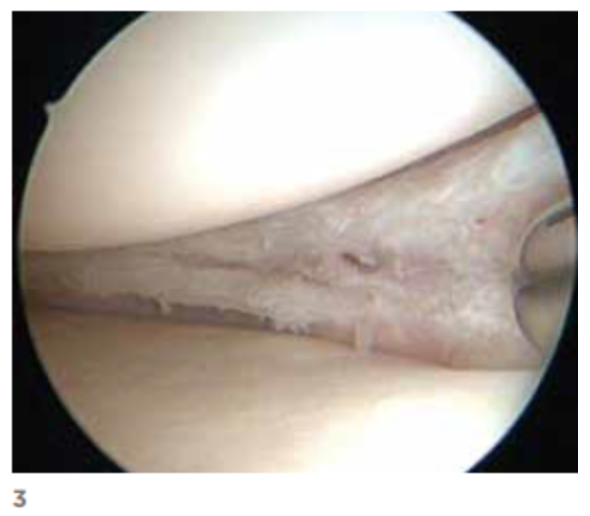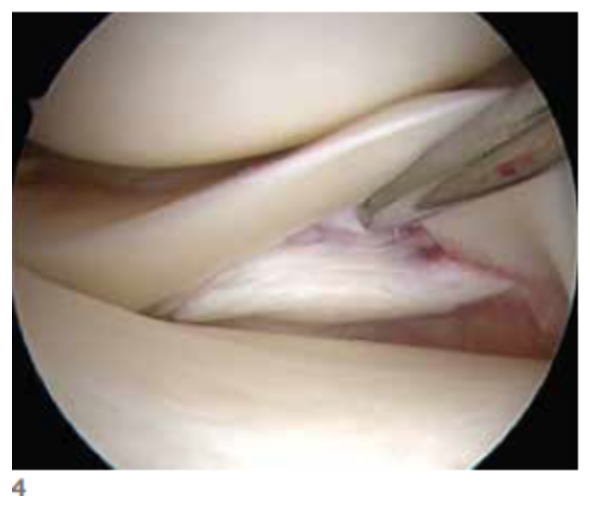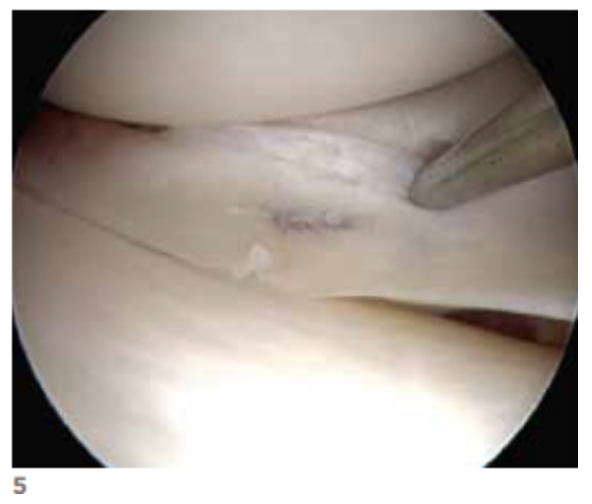- Home
- Arthroscopy and Meniscus Treatment by Meniscus Tear and Meniscus Damage
Arthroscopy and Meniscus Treatment by Meniscus Tear and Meniscus Damage
SYMPTOMS
Meniscus damage is noticeable when there is pain, blockages, or swelling of the knee joint.
 LEGEND
LEGEND
1 – Arthroscopic view of an intact inner meniscus on the right knee
EXAMINATION
Detailed questioning often gives rise to the suspicion that you may be suffering from meniscus damage. The exact physical examination does not always show typical signs, but if they do exist, our suspected diagnosis is confirmed. X-ray images show whether and to what extent a beginning wear and tear or osteoarthritis plays a role. In the MRI we can almost certainly detect or rule out meniscus damage.
TREATMENT
If there are clear signs of meniscus damage, in some rare cases rest and physiotherapy can result in a spontaneous improvement. Often the complaints remain persistent. We will then suggest an arthroscopy of your knee joint.
SURGICAL PROCEDURE
Under general or regional anesthesia, three short incisions of about 1 cm in length are made on the front of your knee in order to be able to introduce irrigation fluid and the instruments into your joint. Thanks to a slim lens with a camera, we can see the joint structures on the screen, providing us with complete control of our surgical steps. If you wish, you can follow the operation on the screen. It has been known for some years what a crucial role the inner and outer meniscus play, as a shock absorber, as a pressure distributor and as a stabilizer. If the meniscus is damaged, we try to save as much of it as possible. Only what is damaged and cannot reasonably be repaired is removed.
If part of the meniscus needs to be removed, we do it as gently and efficientally as possible. Duration of the operation: about 20 minutes.
If over time residual complaints occur, it may be possible to partially replace the meniscus with an artificial implant or entirely with an allograft meniscus (see special handout orthobiology).
LEGEND
2 – Arthroscopic view of an injured inner meniscus on the right knee
3 – Arthroscopic view after partial removal of the inner right meniscus
4 – Arthroscopic view of a torn inner right meniscus
5 – Arthroscopic view of the right meniscus suture
If a large meniscus tear is still fairly fresh, i.e. a few weeks old, it can possibly be sutured. Ideally suited are young patients, a few weeks after the injury, with a tear shape tear close to the peripheral rim of the meniscus. A repaired meniscal tear has the greatest chance of healing if a cruciate ligament reconstruction has to be carried out at the same time (see handout ACL reconstruction). The duration of the operation, depending on the complexity, is approximately 30-40 minutes.
RISKS
You will be treated by experienced surgeons. And yet it is like flying: no surgery is without risk. The risks of this operation can be summarized as follows:
- Risk of infection (stitches): considerably less than 1% (2 – 3%)
- Likelihood that you will require a blood transfusion: ~ 0%
- Damage to relevant tissues: considerably less than 1% (1%)
- Damage to relevant nerves: considerably less than 1% (2 – 3%)
- Thrombosis/Embolism: ~ 1%
- Likelihood that the sutured meniscus does not heal: ~ 10 – 20%
- Residual pain after a partial meniscus removal: ~ 2 – 5%
HOSPITAL STAY
After an arthroscopy for partial meniscus removal, you will stay in the hospital for 2 nights. The day after the operation, the drain is removed from your knee and the swelling and wounds are checked. Quite a lot of weight-bearing is possible, but it is advisable to take care of yourself and your knee for a few days, i.e. use crutches for around a week. If we were able to suture your meniscus back on, the post-treatment will take a little longer. Depending on the shape and length of the tear, it may be necessary to only put a 10 – 15 kg load on the knee and refrain from moving it freely for up to 6 weeks in order to give the tissue the chance to heal in peace. A knee brace that limits it at 90 ° flexion will help you.
DISCHARGE
You will go home when you are practically painless and well on your way with crutches, and when you are comfortable with your knee and the entire situation. You will leave the clinic with a prescription for physiotherapy, the necessary medication for swelling, pain relief and thrombosis prophylaxis as well as a check-up appointment in our out-patient clinic.
Your family doctor will remove the stitches about 10 – 14 days after the operation. In the majority of cases, after 6 weeks the side-effects of the operation have subsided.
pdf for download: Meniscus Injuries

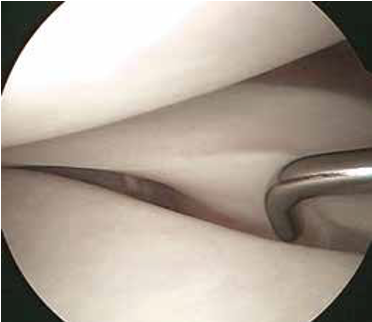 LEGEND
LEGEND